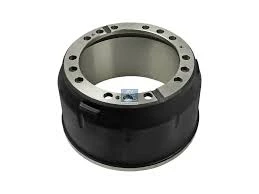
-
 Afrikaans
Afrikaans -
 Albanian
Albanian -
 Amharic
Amharic -
 Arabic
Arabic -
 Armenian
Armenian -
 Azerbaijani
Azerbaijani -
 Basque
Basque -
 Belarusian
Belarusian -
 Bengali
Bengali -
 Bosnian
Bosnian -
 Bulgarian
Bulgarian -
 Catalan
Catalan -
 Cebuano
Cebuano -
 Corsican
Corsican -
 Croatian
Croatian -
 Czech
Czech -
 Danish
Danish -
 Dutch
Dutch -
 English
English -
 Esperanto
Esperanto -
 Estonian
Estonian -
 Finnish
Finnish -
 French
French -
 Frisian
Frisian -
 Galician
Galician -
 Georgian
Georgian -
 German
German -
 Greek
Greek -
 Gujarati
Gujarati -
 Haitian Creole
Haitian Creole -
 hausa
hausa -
 hawaiian
hawaiian -
 Hebrew
Hebrew -
 Hindi
Hindi -
 Miao
Miao -
 Hungarian
Hungarian -
 Icelandic
Icelandic -
 igbo
igbo -
 Indonesian
Indonesian -
 irish
irish -
 Italian
Italian -
 Japanese
Japanese -
 Javanese
Javanese -
 Kannada
Kannada -
 kazakh
kazakh -
 Khmer
Khmer -
 Rwandese
Rwandese -
 Korean
Korean -
 Kurdish
Kurdish -
 Kyrgyz
Kyrgyz -
 Lao
Lao -
 Latin
Latin -
 Latvian
Latvian -
 Lithuanian
Lithuanian -
 Luxembourgish
Luxembourgish -
 Macedonian
Macedonian -
 Malgashi
Malgashi -
 Malay
Malay -
 Malayalam
Malayalam -
 Maltese
Maltese -
 Maori
Maori -
 Marathi
Marathi -
 Mongolian
Mongolian -
 Myanmar
Myanmar -
 Nepali
Nepali -
 Norwegian
Norwegian -
 Norwegian
Norwegian -
 Occitan
Occitan -
 Pashto
Pashto -
 Persian
Persian -
 Polish
Polish -
 Portuguese
Portuguese -
 Punjabi
Punjabi -
 Romanian
Romanian -
 Russian
Russian -
 Samoan
Samoan -
 Scottish Gaelic
Scottish Gaelic -
 Serbian
Serbian -
 Sesotho
Sesotho -
 Shona
Shona -
 Sindhi
Sindhi -
 Sinhala
Sinhala -
 Slovak
Slovak -
 Slovenian
Slovenian -
 Somali
Somali -
 Spanish
Spanish -
 Sundanese
Sundanese -
 Swahili
Swahili -
 Swedish
Swedish -
 Tagalog
Tagalog -
 Tajik
Tajik -
 Tamil
Tamil -
 Tatar
Tatar -
 Telugu
Telugu -
 Thai
Thai -
 Turkish
Turkish -
 Turkmen
Turkmen -
 Ukrainian
Ukrainian -
 Urdu
Urdu -
 Uighur
Uighur -
 Uzbek
Uzbek -
 Vietnamese
Vietnamese -
 Welsh
Welsh -
 Bantu
Bantu -
 Yiddish
Yiddish -
 Yoruba
Yoruba -
 Zulu
Zulu
Understanding the Function and Importance of Drum Brake Adjuster Springs in Vehicles
Understanding Drum Brake Adjuster Springs
Drum brakes have been a fundamental component of automotive braking systems for decades, providing reliable stopping power for a wide variety of vehicles. One critical part of the drum brake system is the adjuster spring. While often overlooked, this spring plays an essential role in the performance and longevity of the brake system. In this article, we will explore the function of the drum brake adjuster spring, its importance, and how it contributes to overall vehicle safety.
What is a Drum Brake Adjuster?
Before delving into the role of the adjuster spring, it is vital to understand what a drum brake adjuster is. The adjuster is a mechanism located within the drum brake assembly that maintains the correct distance between the brake shoes and the drum. The primary function of the adjuster is to compensate for the wear of brake linings over time, ensuring that the brake shoes remain appropriately positioned for optimal braking performance.
Role of the Adjuster Spring
The adjuster spring works in conjunction with the adjuster mechanism to maintain the proper tension and positioning of the brake shoes. It is typically attached to the adjuster and plays a critical role in returning the adjuster to its original position after it has been activated. When the brakes are applied, the brake shoes expand outward and press against the drum. As this happens, the adjuster moves to accommodate the increased distance between the shoes and the drum.
Once the brakes are released, the adjuster spring pulls the adjuster back to its neutral position. This action ensures that the brake shoes are properly retracted and that there is no unnecessary drag on the drum, which can lead to reduced fuel efficiency and excessive wear on the brake components. Therefore, the adjuster spring is crucial for maintaining the functionality of the adjuster and the overall performance of the drum brake system.
drum brake adjuster spring

Importance of Proper Functioning
A well-functioning adjuster spring is necessary for several reasons. Firstly, it aids in preserving the integrity of the brake system by ensuring that the brake shoes maintain an optimal distance from the drum. If the spring fails, it can cause the adjuster to malfunction, leading to inappropriate spacing and potentially unsafe braking conditions.
Secondly, the adjuster spring contributes to the longevity of the braking components. Under normal circumstances, brake shoes wear down evenly, and proper adjustment helps them wear uniformly. When the adjuster and its spring are functioning correctly, drivers can expect fewer brake replacements and repairs, thus saving on maintenance costs.
Finally, safety is a paramount concern when it comes to braking systems. If the adjuster spring fails, it can result in brake failure, which could have catastrophic consequences. Vehicles may experience longer stopping distances or, in extreme cases, complete brake loss. Regular inspections and maintenance of the drum brake assembly, including the adjuster spring, are essential for ensuring safety on the road.
Conclusion
In summary, the drum brake adjuster spring may seem like a small component in the grand scheme of a vehicle's braking system, but its importance cannot be overstated. By ensuring proper adjustment of the brake shoes, it plays a vital role in maintaining braking efficiency, extending the life of brake components, and enhancing overall vehicle safety. Regular inspection of this component is crucial, and any signs of wear or malfunction should be addressed promptly. A well-functioning braking system is integral to safe driving, making understanding components like the adjuster spring essential for any vehicle owner.
-
What Are Drum BrakesNewsJul.07,2025
-
Understanding Brake Drum MaterialNewsJul.07,2025
-
Semi-Trailer Brake Drum: A Key Component for Extreme Loads and Long-Distance TransportNewsJul.07,2025
-
Drum Brake Pads for SaleNewsJul.07,2025
-
Brake Drums for SaleNewsJul.07,2025
-
Brake Drum ManufacturerNewsJul.07,2025
-
Aluminum Brake Drums: The Future of High-Performance CarsNewsJul.07,2025
